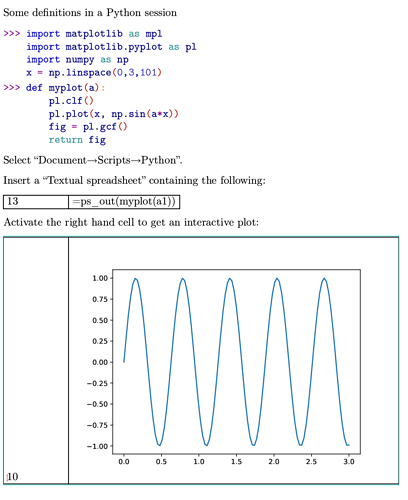Maybe this discussion has already taken place here or elsewhere, but I would like to discuss some of the similarities between Texmacs and the Jupyter ecosystem (notebook, jupyterbook) here and open the discussion on other aspects.
Texmacs is for me the precursor … it offers of course features similar to the kernels of the Jupyter project but with the ease of formatting the text and the equations as well as an unequaled quality of page layout.
The vision of Texmacs and the quality of its realization is already there so what it lacks the most to me is its community size and better visibility … in the order you prefer, the two often go together.
I dream (I’m certainly not the only one) that Texmacs will become one of the key players (just that) in the publishing of interactive (or not: at the discretion and needs of the user) scientific documents and diffusion of these documents (colleagues, students, editors).
I am thinking in particular of several things:
- Edition of “static” documents as they are imagined when printed.
- Edition/Use of interactive documents: mixture of text, equations, sketches, and code generating computations, tables, figures … possibilities of interacting with them through widgets.
- Interaction with other essential existing formats to share, spread and preach the good word (Jupyter notebook, markdown, msoffice or openoffice, … why not org-mode). Pandoc can be an ally here …
If I try to comment these different points:
- Texmacs knows how to do it perfectly, it already excels in this area. Some aspects of the GUI can be improved and new style or template can be added (a tufte like layout please
 ). Thanks to tm-forge and the growing and very nice Texmacs’s community things are changing.
). Thanks to tm-forge and the growing and very nice Texmacs’s community things are changing. - The number of plugins is constantly growing, see for example the great jupyter and julia plugins. What “lacks” in my opinion is the possibility of interacting with these plugins (code, data, figures) via gui elements like Jupyter widgets can do for example.
- Perhaps the most important for improving the visibility and strength of his community. I think this is one of the most important levers for Texmacs to gain all the aura it fully deserves.
For me, the similarities between the Jupyter project and Texmacs are such that I imagine very strong interactions between the two formats (.ipynb and .tm). And if you ask me if I prefer to edit scientific documents (mixing code, equations, figures, …) in Texmacs or a Jupyter Notebook my choice is quickly made. Who doesn’t fall in  with Texmacs.
with Texmacs.
The problem then comes from sharing and communicating these documents. Clearly the .ipynb of the jupyter project are winning (for the moment).
I took an old class project using the Jupyterbook and editing my files I thought holy shit if only I could do it in Texmacs and then deploy it to the web. I searched the web and saw the very promising tm2md plugin. I thought to myself why not have also a Texmacsbook or a way to export to MyST Markdown. Hello tm2md you look so nice and pretty today lets make babies together …
Texmacs could in my opinion become an (THE ?) essential platform for publishing/sharing scientific documents. We speak more and more of reproducible research, publishers are increasingly interested in it. I think Texmacs can play an essential role in this area with all the advantages it already offers.
And you what are your thoughts ?
Enjoy your day 

 ). Thanks to
). Thanks to 

 (in italian one says “si parla del sesso degli angeli”) After some experimentation one can go back with more insights on the theoretical issues.
(in italian one says “si parla del sesso degli angeli”) After some experimentation one can go back with more insights on the theoretical issues.